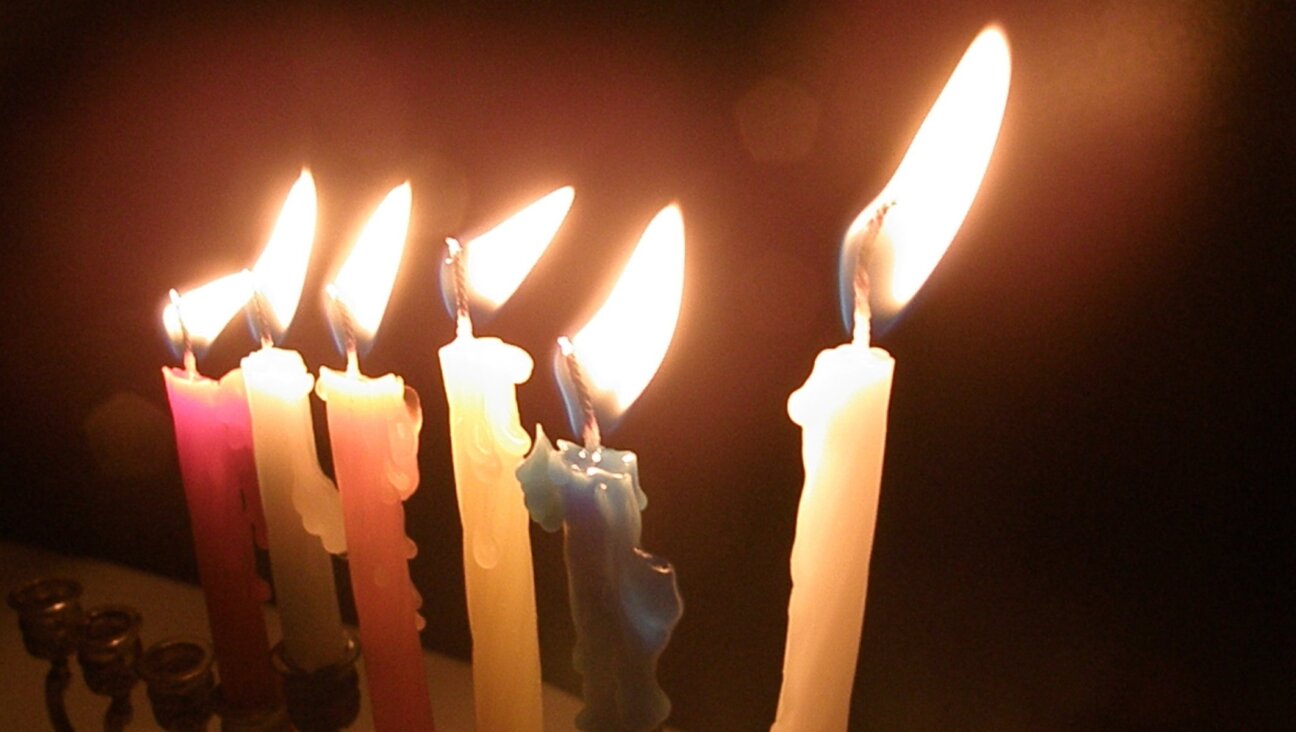Do Your Kids and Grandkids Know Their Family History?

Image by Forverts Archive
This article originally appeared in the Yiddish Forverts.
In the summer of 2001, two psychologists at Emory University conducted a unique study, hoping to find the “secret” to raising resilient children.
The researchers, Marshall Duke and Robin Feivush, suspected that children who had strong ties to previous generations were psychologically more intact. So they interviewed 80 families, including both parents and children, to see how much they knew about their own family’s history. Among the questions: Do you know where some of your grandparents grew up? Do you know the source of your name? Do you know some of the illnesses and injuries that your parents experienced when they were younger?
They also taped the families’ dinner table discussions – apparently, in order to see how frequently details of the family history were mentioned. Finally, they conducted a battery of psychological tests on the children themselves.
The result? The more children knew about the previous generations of their family, the higher their self-esteem and basically, the happier they were. The correlation was so remarkable that years later, a NY Times article about this study elicited a great deal of discussion for months afterwards.
For those of us who feel a bond with our Yiddish-speaking ancestors, this finding is welcome news indeed. In other words, by telling our children and grandchildren about their cultural heritage we are not only teaching them where they come from but we’re also developing a more positive attitude to life. Those family stories apparently make them feel that they aren’t alone in the world, but rather a link in a large family unit going way back, and an even larger unit: the Jewish people. This serves as a psychological anchor that enables them to be able to overcome the challenges of life.
This is why we at the Forverts decided earlier this year to ask you, our readers, to share a story about a favorite heirloom of yours, either in Yiddish or in English. Our goal was first of all, to hear about the wonderful family stories, and secondly, to encourage you all to show your heirlooms to the younger generation – whether it be your children, grandchildren, nieces and nephews or your friends’ children.
The result of our query was extraordinary. 22 of you sent us your photos and the story behind your favorite heirlooms. The stories highlighted the hardships faced by, and the devotion and courage displayed by your grandparents, great-grandparents and in some cases – great-great-grandparents. You can read them all in the new blog, “Our Favorite Heirlooms.”
I believe that transmitting Jewish family stories and folklore should be a goal for every member of the tribe. Occasionally, when I ask people who know Yiddish if they ever use a Yiddish word or expression with the younger generation, or whether they sing Yiddish songs to them or prepare Ashkenazi dishes for them like blintzes or kasha varnishkes, some say yes but others say: “I wish I could but they’re just not interested.”
So let me tell you a secret. Children, especially teens, might look like they don’t care when you share something about the past, and might even say it’s boring but later on they’ll be happy you did. When I was about 14 years old, my father was eager to have our grandmother – his mother – tell my younger sister and me about her childhood in the Bukovina, a former region of Romania, before the first world war. She saw right away that we weren’t interested, so she refused. “Don’t force them,” she said and that was that.
Several years later my grandmother passed away and I soon regretted that I hadn’t spent more time with her, and especially that I hadn’t asked her to teach me how to make the heimish foods I loved so much. In retrospect, I think they should have forced me to spend time with her because as a teenager, I didn’t understand what was important in life.
That’s why telling stories about our heirlooms is such a great idea. When you show a child or teen something that once belonged to their grandfather or great-aunt – something concrete that they could touch and examine – it could naturally elicit curiosity, and questions.
As I recall that scene with my father and grandmother, I wonder what could have been done differently. For example, the initiative shouldn’t have come from my father but from my grandmother – and preferably when he wasn’t in the room. It also would have been better had my grandmothers showed us something concrete from her youth or childhood: a book that our grandfather had given her 40 years before, or a pair of bronze candlesticks, or maybe even a letter from a secret admirer when she was a young lady. That would definitely have attracted my attention.
So when you have a chance, look through the vintage stuff you have in your closet, or in your drawer and see what you find there that reminds you of some happy, sad or funny experience that your parent, grandparent or some other relative had.
Even more importantly, invite the kids or grandkids over for a glass of tea or a cup of hot chocolate and show them the treasures of your youth. The questions will surely follow.

















